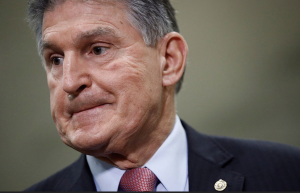heading up.
First, a bit of background.
Big health insurers that sell insurance via the Exchanges have to file their rates with the Feds now. While they don’t insure a lot of people, their filings are detailed, public, and cover 13 states – Georgia, Indiana, Iowa, Kentucky, Maryland, Michigan, Minnesota, New York, Oregon, Rhode Island, Texas, Vermont, and Washington DC.
The fine folks at the Kaiser Family Foundation did a lot of analysis, here are the key takeaways.
- many insurers are projecting a medical cost trend of 4-8%.
- “A substantial share of the increase in premiums is from rising health prices and utilization of health care”
- one insurer said “Medical Care Services CPI in March 2020 (pre-pandemic) was 5.5% and as of March 2022 is 2.9%. This data suggests a correction is imminent as labor and supply cost increases directly impact hospitals and physician offices.” [emphasis added]
Oh, and that COVID thing? “many insurers are projecting the pandemic will have a net neutral or only slight impact on health costs and premiums.”
So…what does this all mean?
My view.
- for this year, increased utilization and prices will drive trend north of 5%
- we’ll see a bump in Q3/Q4 as increased labor costs work their way thru the system
- 2023 trend will likely settle around 5% as inflation in other sectors eases off.
The wild card is – brace yourself – politics.
Sen Manchin – the mercurial-I-can’t-make-up-my-mind-and-it-sure-is-fun-being-the-center-of-attention Senator from West Virginia will determine if 13 million Americans can no longer afford health insurance.

If legislation doesn’t pass, health systems will have to care for more people without health insurance; some systems and hospitals will raise prices to cover their losses.
What does this mean for you?
Higher healthcare costs for the privately insured, workers’ comp insurers, employers, and taxpayers.



It’s hard for me to understand how it isn’t obvious that it costs more to have people uninsured than it does to insure them. And you’re much more expert than I am in this arena, but I completely agree with you that sticker shock is around the corner, across all those segments you mentioned.
Thanks for the note and kind words Les – I’m increasingly concerned that our health care “system” is collapsing from within.
The “haves” – defined as those with some form of insurance – will be paying for the “have nots” – those without = and they will be paying providers many of which are inefficient, poorly run and highly profit-driven.
be well Joe
Joe, when you say “providers” I hope you mean the hospitals. I’ve been in practice for 18 years and the overwhelming majority of the physicians I work with think about ways to save the system and patients money. If you think all physicians are profit driven I am here to tell you that your are wrong. The rising cost of healthcare has little to do with physician reimbursement. I have yet to meet any doctor that does as well as any administrator in the C-suite. As a matter of fact, I recently compared by reimbursement in 2022 to that of 2021 and 2020. And it’s down 3% for most CPTs that I code for. I would bet that’s not the case for the administrators.
Hey Scott thanks for weighing in. Great to know you and your colleagues are focused on costs. I share your view on administrators; the CEO of the hospital where a family member works is – in my biased view – vastly overpaid.
That said, most physicians are now employed – and their employers are most definitely profit driven – whether that’s UHG, Private Equity-owned ER staffing companies, HCA, or most others. Just google “revenue maximization” and be prepared for a deluge of ways to hoover dollars from patients, payers, employers…
Lastly, I don’t agree with your view on physician reimbursement not related to rising costs. Price is and has long been the major cost driver in the US healthcare system and the central reason healthcare here is so much more costly than other industrialized countries. That “price” is – in part – physician reimbursement.
Appreciate your view and thanks for commenting
Be well – Joe
Joe I hear ya but most of us providers (at least those in private practice) do not set our rates. I wish I could increase what we bill but the third parties tell us what they will pay us. We an increase our rates all we want but it won’t accomplish anything. Work comp (fee schedule), Medicare (fee schedule), Medicare Advantage plans (fee schedule), commercial health (fee schedule and I can go one. The big payers control what many providers get paid. And, I can tell you we have seen nothing but reductions from Medicare. This gives the commercial payers a reason to cut us as well. We have not had any substantial fee increases in over 10 years yet costs have risen a lot. Providers need help and it is not coming from the health insurers. Their profits are up almost everywhere at the expense of the public and providers. Sorry they just pass the buck and make excuses yet their executives make big big $$.
Thanks for the note Mark.
Not sure I agree that the big payers control what providers get paid – at least not the bigger providers. Healthcare costs are up most in areas with significant provider consolidation specifically because the big systems can pretty much set their prices, leaving the big payers to decide to take it or leave it. See Sutter Health.
To be sure that is NOT the case with smaller providers, who are – as you note – less powerful in negotiating rates.
Re reductions from Medicare, I’m not sure I follow. Reimbursement for E&M and therapy codes has increased over the last few years as part of CMS move to better value cognitive services. Am I missing something?
be well – Joe